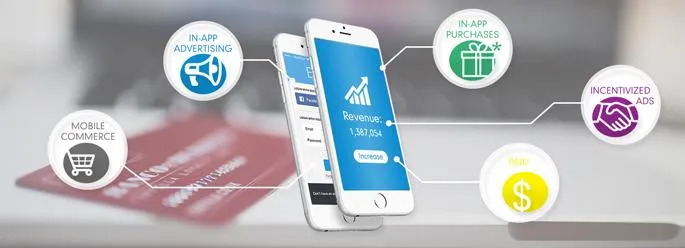
5 Core B2C Mobile App Monetization Strategies

How to monetize mobile apps? Be prepared to answer the question as soon as possible. Development can`t start without this knowledge, as it`s vital that your model merges with the user experience (UX) seamlessly. Which, in turn, helps retain users and lay the foundation for long-term success.
We created this post to shed some light
Monetization strategies and revenues
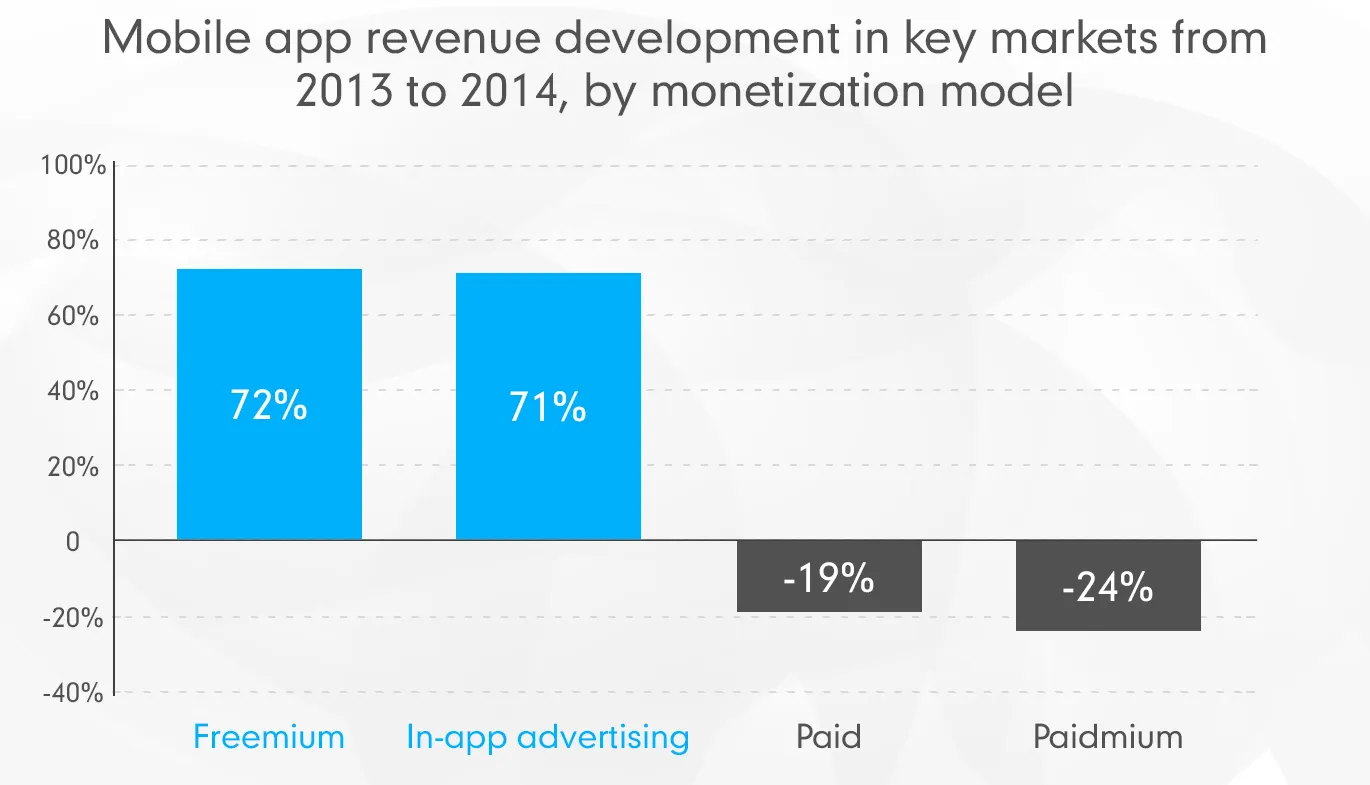
Source: Statista
But, of course, to make a prudent decision, you’ll need to know more. Let’s dive into it.
Paid apps
The most obvious way to monetize mobile apps is to charge for each download. But it’s not the most efficient. However, you can make it work if you set a price within the existing price limits.
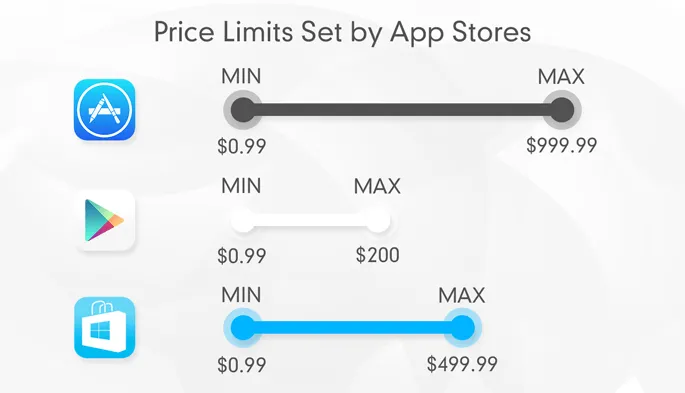
You`ll have to go the extra mile to explain: in what ways is your app superior to the existing free options. Not only your solution, but your store listings must be incredibly good (you`ll find a couple of useful tips here).
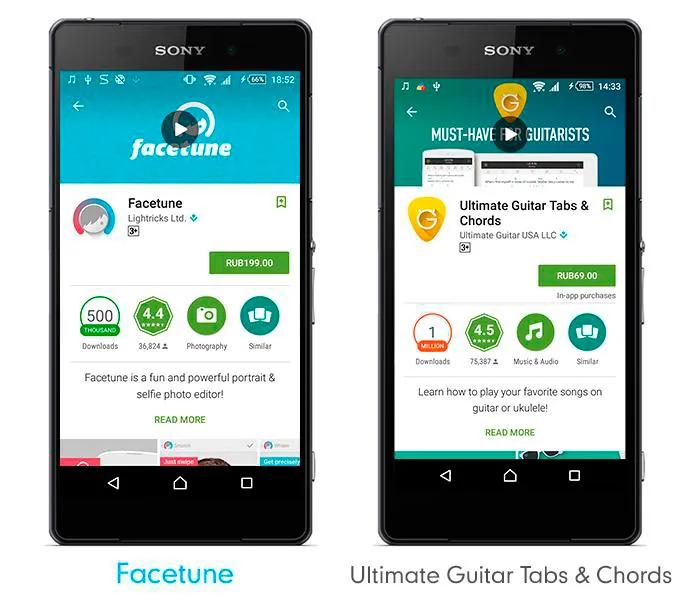
Source: Statista
Pros:
- Guaranteed revenue per each download.
- You’re able to provide a flawless UX (if the download fee is the only source of revenue).
- You can focus on making a supreme and innovative product.
- You have clear, non-segmented revenue flow. (It`s easier to monitor and
analyse results).
Cons:
- It’s harder to persuade people to download your app. They will struggle with paying for an app they haven’t even tried.
- All the recent stats show that this model brings far less revenue than freemium or in-app advertising.
- You have to give the app stores a 30% cut.
- Most of the paid apps don’t get more
that 500 downloads per day. - You need an awesome marketing team. (OK, everyone does. But with paid
apps it’s even more important.)
Works for:
well marketed products that offer unique content, features, services
Successful examples:
Facetune, 7 Minute Workout Challenge, Ultimate Guitar Tabs & Chords, Nova Launcher Prime.
Note*: You can combine the pay-per-download strategy with any of the models listed below. However, it’s a slippery slope. Paid apps with in-app purchases (Paidmium) rarely do well (it only works for games and apps like Minecraft that have pre-existing fan bases). And using ads is a terrible idea, because when people pay for apps – they expect them to be ad-free.
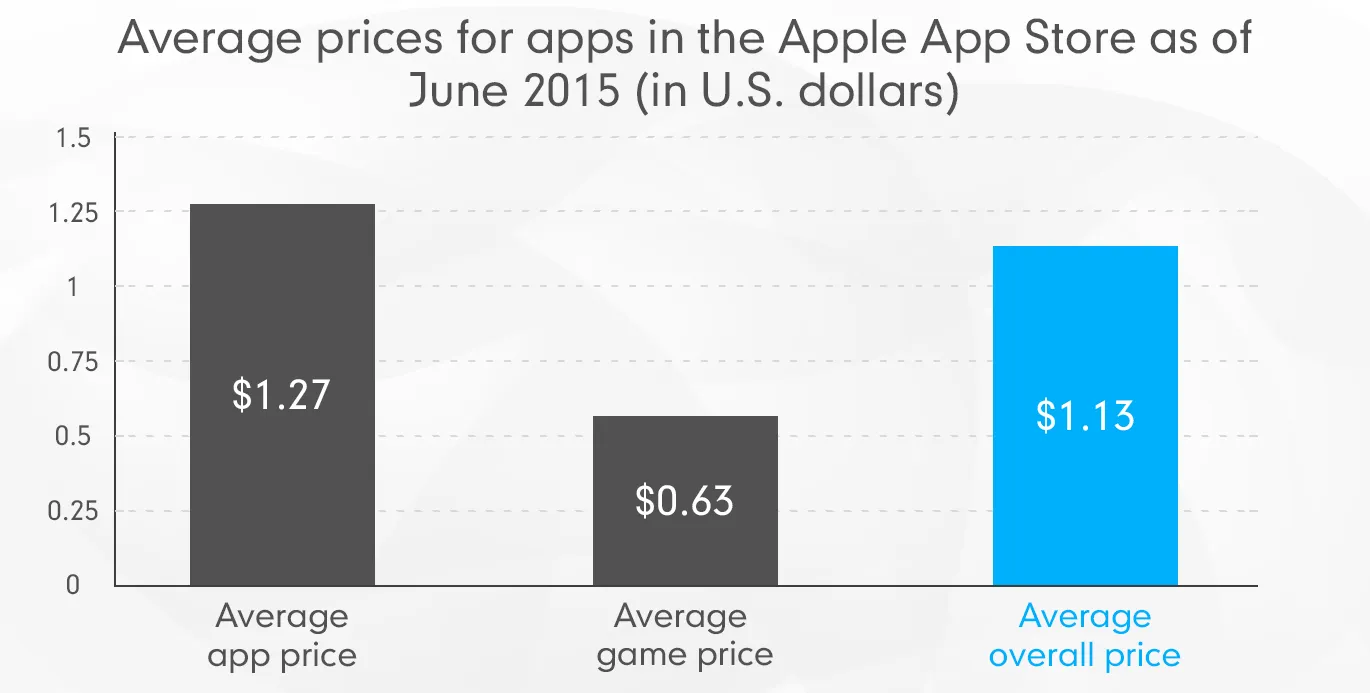
Source: Statista
Free apps
The good news is - it`s not hard to sell something that`s free. But making mobile applications isn`t cheap. And proper marketing costs an arm and a leg, as well. Naturally, you want a tangible ROI. Don`t worry, there are ways of making good money on free apps. How? Let`s figure it out.
- In-app advertising
It’s a go-to monetization channel for many owners. Firstly, you attract users. Secondly, collect valuable data about them. And finally, sell ad placements. You can use mobile advertising networks to implement the ads properly, monitor efficiency and provide more options to advertisers.
Pros:
- No need to ask for money from users.
- It’s easier to form a solid user base and gather valuable data. (Because the app is free!)
- This model shows continuous growth of efficiency.
- This model can be easily combined with any other. Or replaced, for instance: just offer to remove the ads for a reasonable fee (Freemium).
Cons:
- Done wrong, it can significantly spoil the UX and make people leave. Be cautious!
- You need to moderate the ad quantity and quality (= extra work).
- You’ll need regular monitoring and efficiency control to ensure sufficient mobile app advertising revenue.
- Won’t work for apps intended for quick use (interruptions will get in the way).
Works for:
the majority of apps. But only if you can obtain a large user base and implement well-targeted ads.
Successful examples:
Facebook, CM Security.
- In-app purchases (Freemium)
A model currently leading in revenue in both major markets (AppStore and Google Play). This strategy implies that users get basic functionality for free, but have to pay for:
- Full set of features (freemium)
- Premium content and Virtual goods (like in-app currency)
- Digital services
- Subscriptions.
You can`t use it for real-life goods or services (for more information, read Apple`s and Google instructions).
It’s efficient because you can engage people first, and only then give them an offer to buy something. One more thing: you should be upfront and mention that your product isn’t completely free.
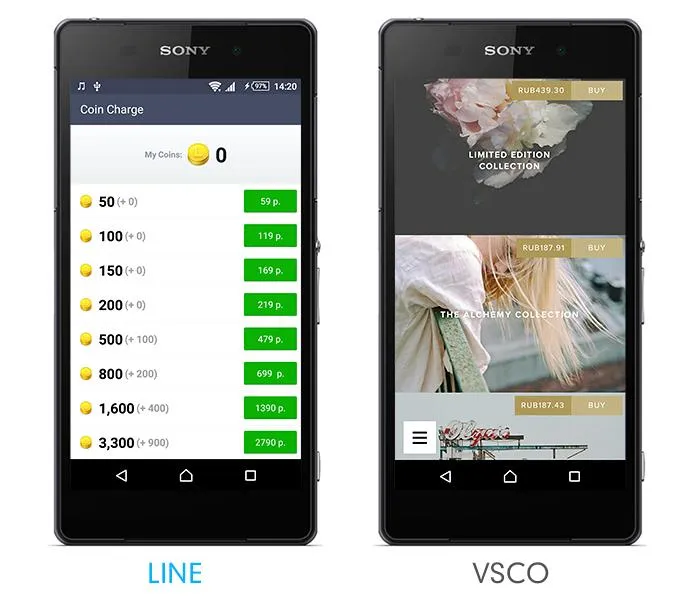
Pros:
- Decent profits and low risks.
- Can be easily combined with other
monetisation strategies. - You`re selling to someone who already likes your app.
- Can, actually, help to enhance engagement.
- It`s easily adaptable (many ways of implementation). Just pick an option that easily blends in with your product.
- According to statistics, brings more revenue than any other model.
Cons:
- Not every user pays.
- It may take longer to start earning.
- Microtransactions have been massively
criticised . To deal with issues like negative feedback you’ll need superb customer service. - You have to give the app stores a 30% cut.
- You need to find the right balance between free and paid stuff. Give too much – there’s no motivation to purchase. Give too little – users abandon the app, leaving you without a penny of their money.
Works for:
games and feature-rich applications. The key is to make the model fit in harmoniously with your app’s purpose and functionality.
Successfully applied in:
Evernote, Sing! by Smule, LINE, VSCO.
- Partnerships/Incentivised Advertising
It’s a relatively new model that’s on the rise now. Find yourself partners, who’ll give users rewards for completing specific actions in your app. It can bring you significant revenue. You will get paid for the advertising rewards and offers for each user that becomes your partner’s customer.
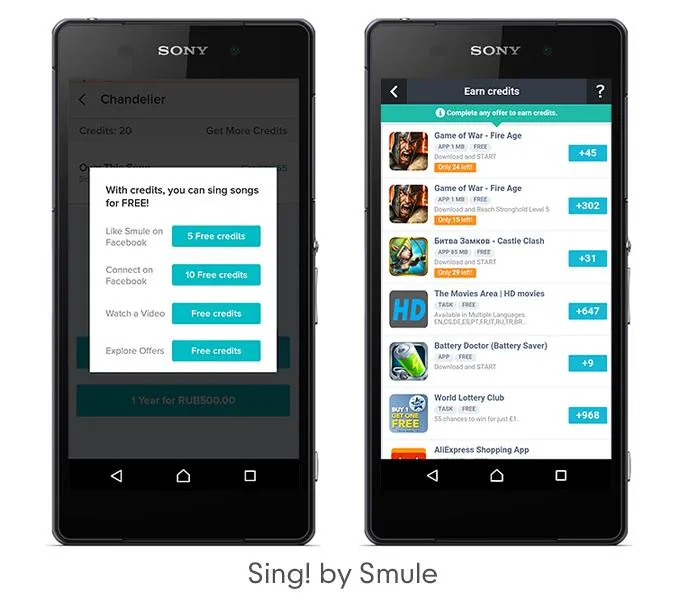
Pros:
- These are ads 2.0: they provide benefits for your users, more ad space – for advertisers, steady income – for you.
- Choose a partner once and be sure that the promoted products are relevant. (Less moderation compared to traditional ads.)
- You can easily track results and conversions.
Cons:
- Requires careful implementation to comply with the app store policies. For instance, it’s better not to offer users to download another
app, but watch a promo video. - As it hasn’t been around for long, it’s harder to foresee results.
Works for:
apps with large user bases that present interest to reliable partners.
Successfully applied in:
RunKeeper, Sing! by Smule.
- m-Commerce
This works for companies that sell physical goods or provide services in the real world. When you create a mobile app, it essentially becomes one of your sales channels. Such products are the easiest to
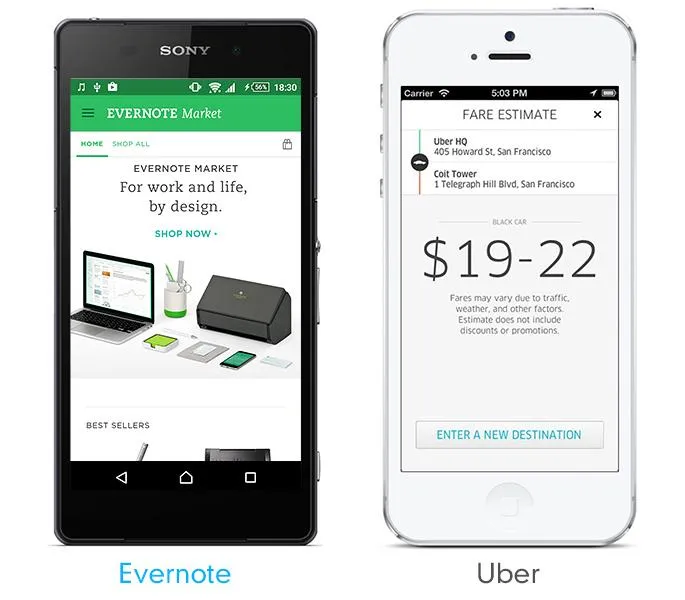
Pros:
- Allows you to cut operational costs (real stores are more expensive to run).
- No need to share your income with the app stores.
- You’ll be open
for customers 24/7. Wherever they are. Endless world of new possibilities: you can diversify, offer new things.- You get a fantastic new marketing channel (for promotions, announcements, loyalty programs, etc.).
- Access to a broad audience, new countries
and markets.
Cons:
- Properly executed, multi-faceted mCommerce solutions are pretty expensive.
- Payment methods are for you to figure out (with the in-app purchases you will get a solution from the app stores).
- You need to have a totally reliable Technical Support and Customer Service.
Works for:
Start-ups and operating companies that sell physical goods or offer services.
Successfully applied in:
Amazon Shopping, AliExpress Shopping App, Postmates, Uber.
Blended Models
The most successful apps don’t just go for one model, they mix, try, test and
Can’t wait to start developing your spectacular mobile app? Magora Systems would love to help you turn your idea into a successful product. So, get in touch and let’s build something ground-breaking together!





